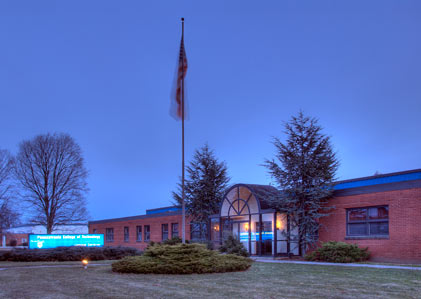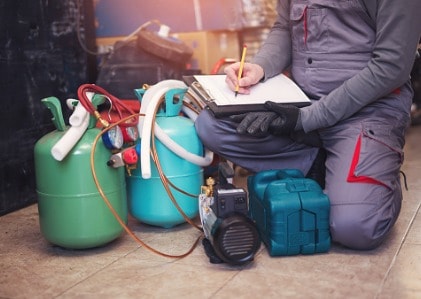How Much Do Wind Turbine Technicians Make?
Salaries are dependent on factors such as experience, education, and skills. According to PayScale (Dec. 2024), the average annual salary for a wind turbine technician is $60,389. PayScale lists four levels of experienced wind turbine technicians and their correlated hourly wages:
- Entry-level (less than one year): $22.61
- Early-career (1-4 years): $24.60
- Mid-career (5-9 years): $27.98
- Experienced (10-19 years): $28.56
The BLS (May 2023) reported that 9,800 wind turbine service technicians were employed nationwide. They earned an average of $65,380 annually and the following percentiles:
- 10th percentile: $47,360
- 25th percentile: $52,770
- 50th percentile: $61,770 (median)
- 75th percentile: $74,940
- 90th percentile: $90,300
Top-Paying Cities for Wind Techs
The BLS (May 2023) reported the following cities as having the highest average annual pay for wind turbine service technicians:
- Bakersfield, CA: $79,820
- Walla Walla, WA: $74,910
- New York-Newark-Jersey City, NY-NJ-PA: $70,900
- Vallejo-Fairfield, CA: $67,260
- Providence-Warwick, RI-MA: $65,560
When considering where to look for wind technology technician jobs, it is essential to do research to learn about established areas with wind technology and regional demands for wind energy, as well as population and occupational data for a particular area.
Here are three examples of metropolitan areas with established or emerging wind energy industries:
Bakersfield, California: Located in the San Joaquin Valley in Kern County, California, the Alta Wind Energy Center is the largest wind power site in the United States.
According to the U.S. Energy Information Administration, “In 2023, California was the nation’s fourth-largest electricity producer and accounted for about 5 percent of all U.S. utility-scale (1-megawatt and larger) power generation.” It can be assumed that areas such as Bakersfield have a demand for wind turbine installers and service personnel and possibly offer competitive wages to attract qualified wind techs.
Houston, Texas: With more than 30 wind-related companies in Houston, Texas has the highest number of installed and under-construction wind capacity facilities which have created more than 24,000 jobs according to the Greater Houston Partnership. With a combined 13,361 wind turbines, the Houston metropolitan area employs 766 workers in their seven utility-scale wind energy generation establishments.
The EPA listed Houston as the number one municipal purchaser of renewable energy and green power accounts for 90 percent of the total electricity use in the city.
Duluth, Minnesota: The state of Minnesota gets half of its power from renewable energy sources. In fact, in 2024, the U.S. Energy Information Administration reported that “Wind energy provides the largest share of Minnesota’s electricity generation from renewable resources. In 2023, it accounted for more than three-fourths of the state’s renewable generation and 25 percent of the state’s total net generation.”
What’s more is the population of Duluth, Minnesota is increasing at a rate of 1.1 percent according to the U.S. Census. Population growth usually correlates with an increased demand for wind energy, which then could result in higher-than-average salaries in similar regional areas.
Top-Paying States for Wind Techs
The BLS (May 2024) reported the following states as having the highest average annual pay for wind turbine service technicians:
- California: $94,320
- Kentucky: $82,470
- Pennsylvania: $77,090
- New Jersey: $73,780
- North Carolina: $72,400
West Virginia has been hit hard by the decline in coal mining, but fortunately, miners have skill sets that transfer well to working on wind turbine installations, according to the New York Times. Because so many individuals left the state when their coal mining jobs disappeared, those who remained are in demand to be hired into green energy jobs as wind techs.
In 2023, 59 percent of Iowa’s total electricity net generation came from wind, the largest wind power share of any state. Although local schools offer wind turbine technology training, not enough students enroll. The shortage of trained technicians has led to higher wages for the available workers. The job situation is similar in Colorado and the Dakotas.
For varying reasons, trained wind techs are in short supply. As more wind farms are built or scheduled for construction to meet growing green energy demands, the need for technicians remains greater than the supply.



